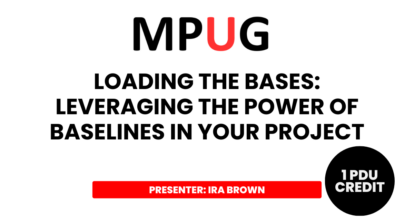No matter what features Microsoft introduces into its latest release of Microsoft Project, it will forever fail to address some basic needs for project managers as they approach the tool. Here are six practical suggestions when using any version of Microsoft Project.
Understand the Challenges to Using Microsoft Project
There’s a reason that spreadsheets are the most commonly used software tools to manage projects. Spreadsheets are more intuitive and predictable than Microsoft Project. Project is relatively easy to use when starting to coordinate tasks, but it can quickly become cumbersome and unmanageable when attempting to optimize resources and control your schedule or budget. A streamlined approach to using the most appropriate features is highly recommended. I have generally found that a project manager can effectively plan and control their projects with far less than half of the tool’s functionality. One way to streamline your approach to the tool is to minimize data entry to certain key fields (e.g. Task Name, Predecessor, Duration, Actual Start, Actual Duration, and Remaining Duration, to name a few).
Know the Planning Limitations
Microsoft Project isn’t a project management tool. Let me repeat that last sentence: Microsoft Project is not a project management tool. It was developed as a schedule tracking application, but has become accepted over the years as a comprehensive project management tool. It is not the most effective tool when it comes to brainstorming activities like project planning. Many project managers get challenged when they drag their teams through a planning session with nothing but a Gantt chart. Gantt charts aren’t very conducive to team interaction during the planning process. Teams often respond better and produce higher quality planning information when using affinity diagramming tools like mind maps and work breakdown structures. That brings up another good suggestion…
Integrate a Work Breakdown Structure (WBS)
For all the years that Microsoft Project has been in use, there has never been a built-in WBS feature. This has always amazed me. Previous versions have attempted to integrate with Microsoft Visio to create WBS diagrams, but this was never an effective feature. Project managers will often utilize summary tasks and subtasks (i.e. indenting tasks) in order to create a hierarchy of work within a Gantt chart. This is a good start, but I would go a step further and use an add-on tool such as WBS Chart Pro (criticaltools.com) which integrates the Work Breakdown Structure into Microsoft Project for reporting as well as front-end planning functionality.
Improve Estimation Techniques
Often times the weakest link in the planning process is the quality of work and cost estimates for project activities. There are several things to keep in mind as you enter Duration, Work, or Cost estimates into Microsoft Project. First, it is your responsibility as the project manager to challenge and validate estimates you receive from various sources. If you have gone through enough projects, you know that you can’t assume every estimate will be accurate. Refer to historical data, break down components to smaller work packages, and push back on those Subject Matter Experts (SMEs) until you’re more confident in the quality of the estimates. In addition, you can use various techniques such as Delphi to gain consensus on estimates or Stochastic Modeling to leverage three-point estimates and improve the confidence in your overall schedule or budget. There are built-in PERT Analysis features, add-on tools (e.g. Risk+ from Deltek) and even macros for Monte Carlo simulation available to integrate three-point estimation and risk management into Project plans.
Standardize, Share, and Optimize Your Resources
Entering resources in Microsoft Project is quite easy. Defining them properly is not. What I mean is that coming up with a standard naming convention for resources can be challenging. This is especially true when there are many different stakeholders for project data resource managers, executives, portfolio/program management, and, of course, team members. Defining a common set of resources to meet all major reporting needs is often the job for a Project Management Office (PMO). The PMO may also be charged with setting up a Resource Pool that can be shared across multiple projects and maintained centrally. Ultimately, a key project management responsibility during the planning and control portions of a project is to optimize the usage of resources such that those resources can effectively achieve the work and thereby commit to the plan. A good understanding of the Resource Leveling feature in Microsoft Project allows a project manager to identify key resource bottlenecks and optimize assignments proactively to reduce schedule risk.
Know Your Limitations in Sharing Information
It’s much easier to share information with spreadsheets than with Microsoft Project since almost everyone has a spreadsheet application on their computer. Unfortunately, licensing costs make Project a limited deployment for most organizations. For the individual project manager there’s a rarely leveraged discount available through academic licensing. Taking a professional development course or having a child in school allows for up to 90 percent off of the list pricing. It’s well worth taking advantage of this discount. Check out online academic software resellers for more information on eligibility and pricing.
This article first appeared in the University of California Santa Cruz (UCSC) Extension blog, The Art of Project Management.







